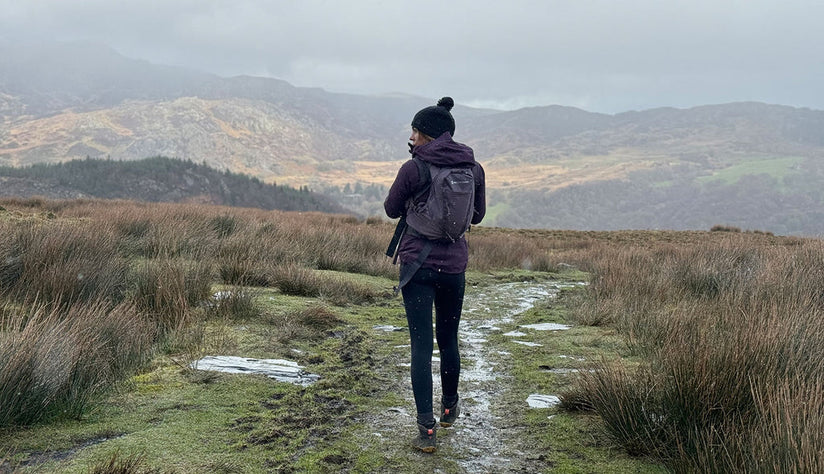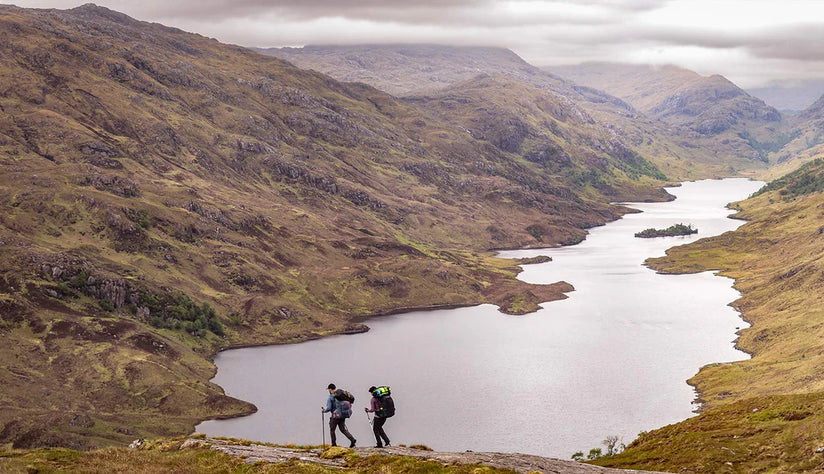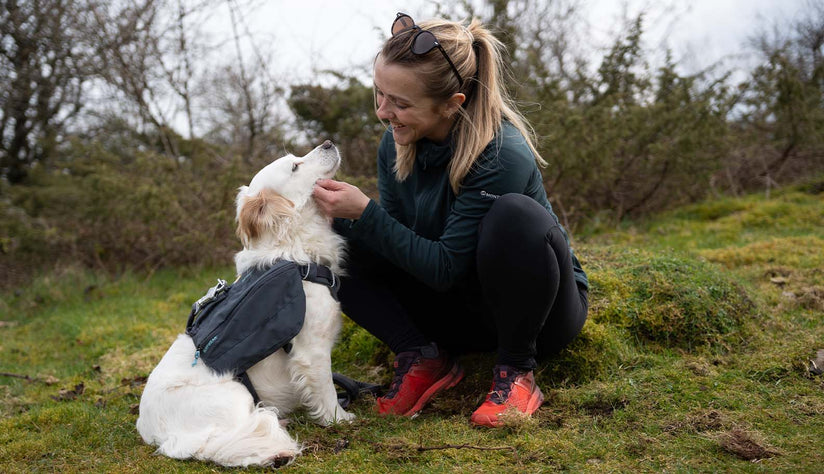Every other endurance challenge I have previously done fades in the face of the Montane Yukon Arctic Ultra (MYAU). Rather than an athletic competition, this experience is best understood as an extreme survival adventure. It is, therefore, no coincidence that a previous edition of the MYAU has seen as little as one finisher.
Yukon Event Overview
The 2023 Montane Yukon Arctic Ultra took place from February 4th to 17th in Whitehorse, Canada offering four distances: a 26 mile (m), 100m, 300m and a biannual 430m version done by bike, skis, or on foot, with the longest route taking runners to Dawson City. Due to limited time off from work, I opted for the 300m route by foot. We would set off from Whitehorse with the first checkpoint (CP) being in Muktuk (26m), a dog-breeding farm for mushers, followed by a remote CP at Dog Grave Lake (33m), the 100 mile mark at Braeburn Lodge (35m), also host of the Yukon Quest, another remote checkpoint at Mandanna Lake (52m) as well as Carmacks (27m), a recreational center which required participants in the 300 mile race to have a mandatory eight hour (h) rest. Up until this checkpoint, strategies for racers in the two longer distances would be similar, as both would have to meet the four and a half day cut-off. However, this would drastically change after Carmacks.
Following the mandatory rest, 300 mile racers leave with approximately three days left to complete 130 miles - a challenging task given the 180 miles we had in our legs already and the race usually being longer due to the winding path the trail that takes on lakes and rivers. Participants of the 430 mile distance face a more lenient time frame of another eight to nine days on the trail, but are required to thrive in full remoteness. In short, 300 mile racers are pushed deeper into significant sleep deprivation for a final sprint, while 430 mile racers have to embrace absolute isolation. Past competitors of both distances have commented that they prefer the longer distance due to the beauty and variety of the trail, as well as more time to finish.

41 miles away from Carmacks is McCabe Creek, a hidden-away checkpoint in the thick forest. From there, Pelly Crossing is quite close (28m) followed by a 33m trek on a frozen river to reach Pelly Farm, a novelesque farm owned by the Bradleys, a family of wolf trappers who host athletes of the MYAU every year. Pelly Farm marks the final checkpoint before the distances split and 430-mile racers head out to Scroggie Creek (65m) and finally Dawson City (99m) while the 300-mile racers return via a forest road on rolling hills to Pelly Crossing (32m). Discover more route highlights in Montane’s official story behind.
2023 Race Winners
Overall, the 2023 edition was marked by mild conditions for the first 100 miles. Colder sections were to be experienced deeper into the Yukon wilderness, with snowfall forcing racers to break trail. Jessie Gladish, a Yukon native and icon of the race, became the first woman to do the 430-mileage on bike, foot and skis while also winning the overall 2023 edition on her bike. Another prominent competitor was Tommy Chen, a Taiwanese racer returning after first taking on the Yukon race 10 years ago and becoming the first Asian to complete the race.

#TeamMontane racer Rebecca Ferry was also competing this year for the first time. Typically found taking on high-altitude ascents, the MYAU presented her a unique take on navigating an extremely cold environment. Taking on the 100-mile route by foot, Rebecca finished 1st woman. Here’s what she thought:
“This isn’t any ordinary race. It is so much more than that. It is predominantly a lesson in the art of survival. It is quite easily one of the hardest things I have ever taken on - both physically and mentally. I needed to utilise my entire arsenal of skills to get to the end of this race in one piece. It was also one of the most uniquely friendly and supportive events I’ve been involved in. The other participants were not competitors, but more like compatriots, such was the collective sense of support. Each one of us knew just how difficult this was.” Rebecca Ferry
The lure of the Yukon
Although repeatedly advised against it, I decided to sign up for the MYAU 300-mile race in the team category, with my race partner Josh Tebeau. We both started ultra-marathoning about a year ago, have similar fitness levels and from seeing him push through a severe ankle injury in the Georgian Caucasus, I knew he would not be someone to quit on me when things got hard. The high chances of a scratch (DNF), as well as the experience of the Yukon cold and wilderness, are what intrigued us most about this race.
The implications of extreme weather in the sub-Arctic winter are something we could have little influence on if managed poorly. And this is what makes the MYAU so special; whereas it is perhaps the essence of the ultra-marathoner to be able to overcome and embrace physical pain, any small problem can spiral into frostbite and/or hypothermia in the Yukon. The body must constantly be monitored and taken care of as even the slightest inconvenience can mutate into a problem with long-term consequences (i.e. loss of digits and extremities) as witnessed in the tragic incidents of past editions.
We were also warned of different pace needs to meet the minimum threshold for keeping warm, which is highly individual and hard to be kept in sync as a team. Being the only woman to sign up for the 300-mile edition, I also felt that I could further the initiative to raise funds for the university education of young women in Sierra Leone, something I started last year with my participation in the 4 Deserts Grand Slam Plus (@wecanrunproject).

My Experience on the Trail
Our initial strategy was to frontload distance and do a big first day of up to 50m, setting up camp ahead of Dog Grave Lake, in order to have leeway when going into Carmacks. We also did not want to be chased by the eight-day cut-off and found that this would best be achieved by doing as much work as possible, whilst still well-rested early in the race. However, as neither of us brought any outdoor and wilderness experience to this race, we ended our first section ten miles earlier to focus on having a solid bivvy. This took an unforgivable time of eight hours, including sleep, building up and down the tent, boiling snow for food and water, as well as doing a full sleep clothing change. We never used the stove again and I never changed my clothes to sleep in again.
Nevertheless, the extra rest turned out to be a good choice as we got in a bigger day in our next section, with another four-hours ahead of Braeburn. The first significant challenge arose that night as my frozen hair thawed into my sleeping bag, leading me to get intensely cold very fast. I was shivering and felt unable to preserve my core temperature. Josh gave me his hand warmers to put on my chest to restore some body heat and it worked, but the incident was quite scary to me. Heading into Braeburn the next day, we did feel very anxious to be left at the end of the pack but equally were happy with making it in one piece and being healthy. Similarly, we got to enjoy the Northern Lights, combined with a full moon which was absolutely spectacular.

We were given massive burgers and the biggest cinnamon buns I have ever seen and rested for two hours in a trailer park resembling shelter, before heading out of Braeburn and into the night to make our way into Mandanna Lake. Due to the intense switch from cold to heat, my metabolism crashed shortly after leaving Braeburn and further deteriorated when we encountered an intense temperature drop on one of the chain lakes. To avoid sweating, we wore base layers and light vests which held up well in -15°C weather, but were not suited for colder temperatures and the intense wind blowing. Josh especially was getting severely cold and so we decided to hustle as fast as possible to the end of the lake, in hopes of finding a forest patch to set up the bivvy.
Wild Encounters
It was hitting the coldest time of the day (5-8 AM) and we knew being stuck in a series of lakes was troublesome. After layering up and finding a somewhat sheltered spot, we built our tent and wrapped ourselves in our sleeping bags as fast as we could. Footprints of wolves could be seen all around our bivvy spot and after an hour of sleeping, both of us heard sniffing noises and poking at our tent.

At the next checkpoint at Mandanna Lake, volunteer and skidoo guide Brian Allemang told us that there was high wolf activity in the area where we rested. Behind us were 2 British sisters Josephine Bush and Roisin Ward. They participated in the race to raise funds for Hari Budha Magar, a former Gurkha looking to be the first above-the-knee amputee to climb Mount Everest. They later told us of having seen wolf tracks for miles following our footprints. In hindsight, this was scary.
Challenging Cold Conditions
We had a fast day going into Carmacks, as we were a bit worried about the cut-off and rushed ahead. The true Yukon cold now kicked in with full force making it hard to preserve heat in the extremities. I crushed my fingertips as hard into my trekking poles as I could, a piece of advice that Phil Cowell, a British volunteer and 2022 finisher of the 300-mileage, had given me as he had experienced frostbite in nine out of ten fingers in a previous edition.
Arriving at Carmacks felt like a milestone, and mentally interrupted our rhythm and momentum. It was hard to be welcomed into the warmth and stay there for the mandatory eight hours, to take a shower and reorganize sleds, just to then be thrown out again into the dark and cold. Coming in the late afternoon also meant that we would have to leave in the early morning hours, ahead of the coldest time of the day. We set off to McCabe Creek at around 4 AM, a small cabin in the woods, easy to be overseen in the dark (we did have to check coordinates to find it).
Once again, we were struck by a cold wave which left us completely delirious, stumbling along what should have been a fast and easy section, an ice road. Fabian Schmitz, a German expat to the Yukon, dog musher and skidoo guide for the race later told us laughingly that we were welcome to now finally experience ‘normal’ Yukon temperatures.

We made more progress throughout the day and into the dark. Hallucinating heavily in the woods, something we both did every night. We saw and felt the wildest of imaginations ranging from ritual signs to shrunken heads, exotic animals to cartoon characters. There were witches hanging from treetops, trying to pull me into the forest with their long arms and entangling hair, staring intensely at me with their cold green eyes that had captured the Northern Lights. The glittering reflections of the white, the weird arrangements of snow on the Spruce, the never before seen shapes of trees, and mind-numbingly endless paths made this easy to fall for. At times, I had to shut my eyes and jog lightly behind Josh in order to retain focus.
The Final Push
The next day up to Pelly Crossing and beyond turned out crucial for our ability to finish the race, as we would be left with the final 100-miles, and around 48 hours to complete it. There was no time to rest anymore and we would have to keep on moving for the rest of the race. There was heavy snowfall that night, which meant breaking trail the next morning, an arduous task when sled-hauling and equally dangerous in terms of getting wet feet and potentially frostbite. Josh‘s toes numbed down but putting on his neos instantly helped. Upon our arrival at Pelly Crossing, we found out the sad news that Josephine and Roisin had dropped out due to a gastro-intestinal virus that had spread amongst the athletes.
We felt spent from the sad news and the stressful day behind, but we had to set off to the next section into the night after only a brief rest. Our journey across the frozen river was accompanied by the Northern Lights again and we pushed through the endless hallucinations until we finally reached Pelly Farm around noon, our final destination before heading back to the finish line at Pelly Crossing. We had moved through the entire night and passed by everyone who had set out to Pelly that evening, as some decided to bivvy on the warmer spots of the river. It felt good to be more ahead in the field as we grew more and more into the race with each passing day. We took a one-hour nap in one of Bradley’s curious rooms, filled with old patchwork fabrics and the furs of wolves they had trapped.
As we were about to leave, Australian endurance swimmer Tim Young entered the door, who recently DNF, due to the intense mental toll the remoteness of the race had taken on him. I then realized how lucky I was to not be alone in the wilderness but to have Josh by my side, whom I completely trusted for if anything went bad. Things such as our constant night-time hallucinations, our experience with mild hypothermia, thawing hair, cold toes and fingers did not turn out to be problems as we had each other to rely on and check on. We paced each other perfectly, and in times of weakness, the person feeling stronger could always take over the lead. In complete solitude, this help does not exist.

Ahead lay a forest road embedded in the eccentric and massive Spruce of the Yukon. To me, this easily was the most mind-numbing and excruciating section of the race. Mentally, there was something hard about returning, rather than moving forward. We had little to no sleep between us and felt broken down. Josh was suffering through the gastro-intestinal virus he had contracted and was walking on a swollen ankle, and I was fighting cramps from my period along with a tight Achilles heel and aching feet. It was hard to stay awake, and continuing to put one foot in front of the other felt torturous.
Early in the morning hours, we finally made it back to Pelly Crossing, and the final destination of our 300-mile journey through the Yukon wilderness.
Closing thoughts
I would like to thank all the volunteers and Robert Pollhammer for creating this incredible event. I am particularly grateful to Jessie Gladish, Gillian Smith, Fabian Schmitz and Phil Cowell for organizing an invaluable training course, with pivotal technical learnings ahead of the race. Thank you to Mark Hines who also gave his insights to us in his great course in the Scottish Highlands. Thank you to Javed Bhatti for his lesson on using poles on trail, to Brian Allemang for organizing the most awesome checkpoint at Mandanna Lake, Sabrina Mack, Phil Cowell and Sam Perry for the extra cookies, Jim Palmer for fixing my left pole, Mark Kelly for the pictures, all the skidoo guides that came out to check on us, as well as the medical team.
And finally, thank you to Josh Tebeau who decided to join me on this completely insane adventure - here’s to many more to come!

Feeling inspired?
Cold race enthusiasts don’t have to wait long for another sub-zero event in the heart of the wilderness. Get ready for the Montane Lapland Arctic Ultra (MLAU), a thrilling adventure set in the heart of Swedish Lapland, which kicks off on 05 March. Take a look at our story behind the MLAU to find out more about this inspiring event.


















